A team of government researchers, including Dr. Robert Chetlin (Associate Professor and Clinical Director of Sports Medicine at Mercyhurst University, Research Physiology Contractor in the Division of Safety Research at CDC-NIOSH), have collaborated with Dr. Michael Sereda and Dr. Klaus Nave of the Max Planck Institute for Experimental Medicine (MPI) to successfully secure the CMT1A transgenic rat from MPI and establish a colony in the United States. Presently. Initial funding for this project was supported by the Hereditary Neuropathy Foundation (HNF, New York, NY).
These government investigators, including Dr. Chetlin, are continuing to examine the effects of a validated, evidence-based mechanical loading “resistance-type” exercise protocol on these transgenic CMT1A rats. These unique animals are trained on a specialized machine, called a dynamometer (a machine used to exercise and test force, torque, and power), using stretch-shortening contractions (SSCs; coordinated muscle lengthening and shortening movements used daily in human and animal activities).
The animals’ exercise routine is very tightly controlled, including all the training variables, such as the volume (reps and sets), intensity (how hard), duration (time per training session), frequency (number of training sessions per week), and progression (training variable increases) of exercise. The extent to which the animals had beneficially adapted to the exercise training was determined upon completion of the “resistancetype” training protocol. An integrated systems approach was utilized to examine and quantify exerciseinduced changes in:
(1) functional performance of muscle, including strength and muscular work;
(2) muscle physiology and quality and individual myofiber histomorphology (microscopic examination of muscle anatomy, function, and pathology);
(3) the nerve coating (myelin), connection between nerve and muscle (neuromuscular junction), and the nerve itself, and;
(4) the genes, proteins, and other potential “biomarkers” that may exert control over the way muscles and nerves operate and communicate with each other in response to exercise.
Collectively, these initial findings suggest that SSC-exercise training may be the preferred mode of resistance-type training, given that it enhanced static and dynamic muscle performance and muscle quality. This provides evidence suggesting that when an established fundamental model of CMT1A is mechanically loaded, using a validated, in vivo, highintensity, “resistance-type” training regimen, a dynamic adaptive response results.
This occurrence may represent a critical direction for establishing an achievable translational paradigm for increased quality-of-life and independence in human CMT patients. To our knowledge, this is the first study to integrate an established animal model of CMT and investigate the effects of a validated and adaptive, resistance-type exercise training regimen on PMP22 gene expression in muscle for any animal or human CMT population.
Given the course of these experiments, we now intend to refine the exercise exposure to identify the type, quantity, and frequency of training that provides optimal functional benefit to the transgenic CMT1A rats. Additionally, future studies will also examine the possible effects of dietary supplements, and other small-molecule therapies in the transgenic rats, with and without exercise, to determine if the combination of exercise and these other interventions are more effective than any of these approaches used alone.
A synopsis of the most recent findings, presented at the 2015 Annual Meeting of the American College of Sports Medicine (ACSM), includes:
- SSC-exercise training protocol of 4.5 weeks duration (~6-month human equivalent), employing dynamic SSCs, elicits an adaptive response in transgenic CMT1A rats.
- The training-related adaptive performance and physiological response improved relative isometric force production (static strength), maintenance of normalized muscle mass (a ratio of examined muscle mass to limb length), and a trend for improved static muscle quality (a ratio of isometric force to normalized muscle mass).
- Improved dynamic (SSC) muscle function indicated by an increase in positive work and a trend for increased cyclic force (repeated SSC force); while, additionally, there was an enhancement in dynamic muscle quality (a ratio of SSC force to normalized muscle mass).
- SSC-exercise training reduced PMP22 gene (the gene which codes for myelin production; mutations of this gene may result in CMT1A, Dejerine-Sottas Disease, or Hereditary Neuropathy with liability to Pressure Palsy) expression, which may, ultimately, improve myelin integrity (and function) in these SSCtrained animals.
Disclaimer: The information presented in this article has previously been disseminated to the public at the 2015 and the National Conference of the American College of Sports Medicine. HNF, in part sponsored this research project.



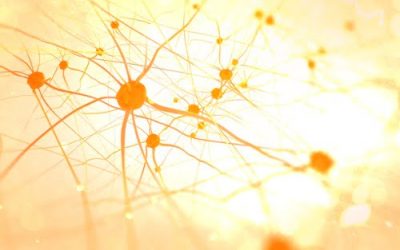

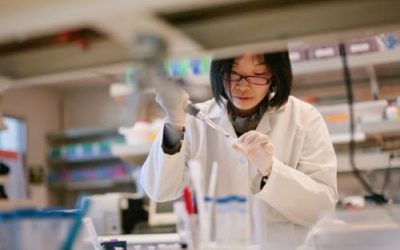
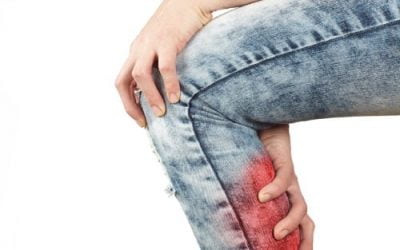
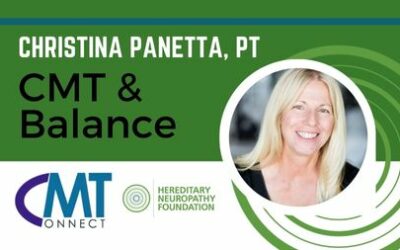

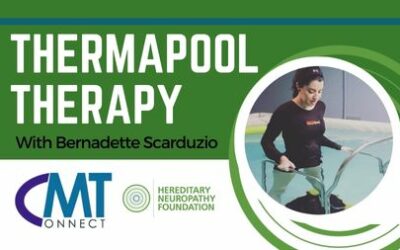

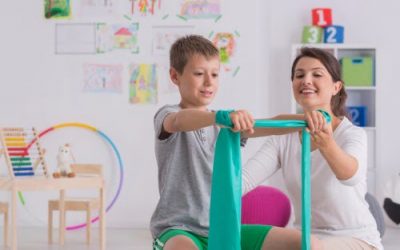
I am 57 years old and have CMT and would like to have updates on the disease that I have managed to live with.